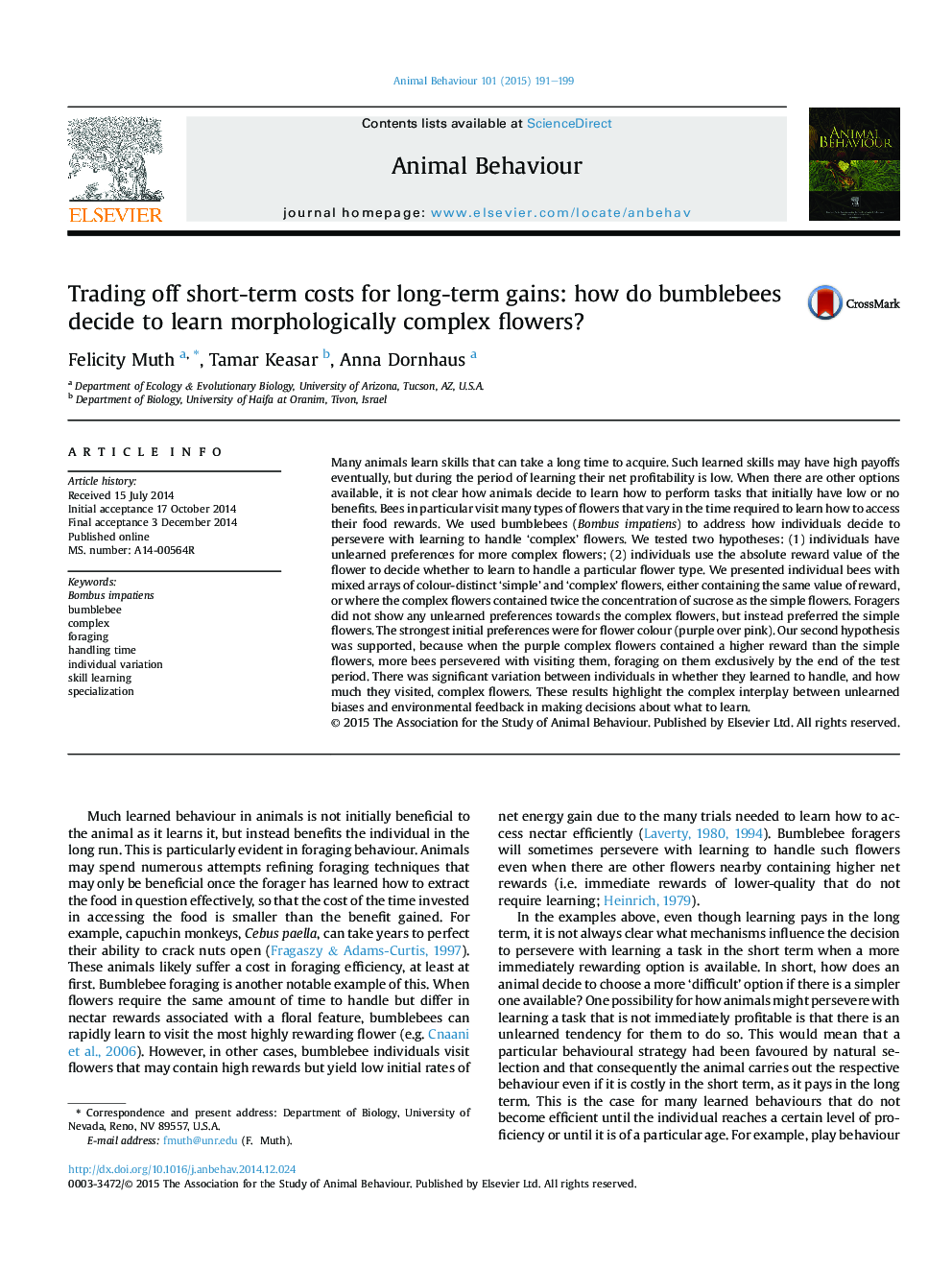| Article ID | Journal | Published Year | Pages | File Type |
|---|---|---|---|---|
| 8490147 | Animal Behaviour | 2015 | 9 Pages |
Abstract
Many animals learn skills that can take a long time to acquire. Such learned skills may have high payoffs eventually, but during the period of learning their net profitability is low. When there are other options available, it is not clear how animals decide to learn how to perform tasks that initially have low or no benefits. Bees in particular visit many types of flowers that vary in the time required to learn how to access their food rewards. We used bumblebees (Bombus impatiens) to address how individuals decide to persevere with learning to handle 'complex' flowers. We tested two hypotheses: (1) individuals have unlearned preferences for more complex flowers; (2) individuals use the absolute reward value of the flower to decide whether to learn to handle a particular flower type. We presented individual bees with mixed arrays of colour-distinct 'simple' and 'complex' flowers, either containing the same value of reward, or where the complex flowers contained twice the concentration of sucrose as the simple flowers. Foragers did not show any unlearned preferences towards the complex flowers, but instead preferred the simple flowers. The strongest initial preferences were for flower colour (purple over pink). Our second hypothesis was supported, because when the purple complex flowers contained a higher reward than the simple flowers, more bees persevered with visiting them, foraging on them exclusively by the end of the test period. There was significant variation between individuals in whether they learned to handle, and how much they visited, complex flowers. These results highlight the complex interplay between unlearned biases and environmental feedback in making decisions about what to learn.
Keywords
Related Topics
Life Sciences
Agricultural and Biological Sciences
Animal Science and Zoology
Authors
Felicity Muth, Tamar Keasar, Anna Dornhaus,
